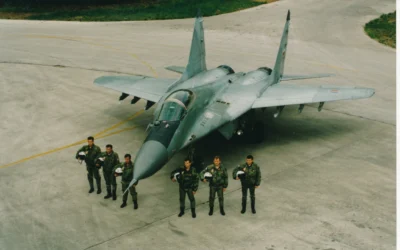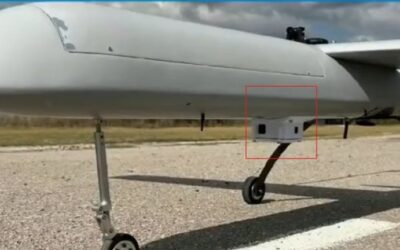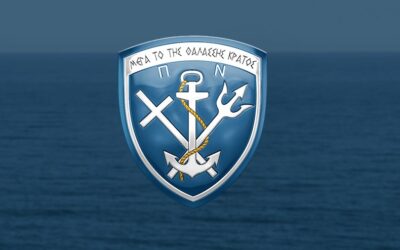The 1999 NATO intervention in the Federal Republic of Yugoslavia (FRY) marked a significant turning point in post-Cold War military operations…
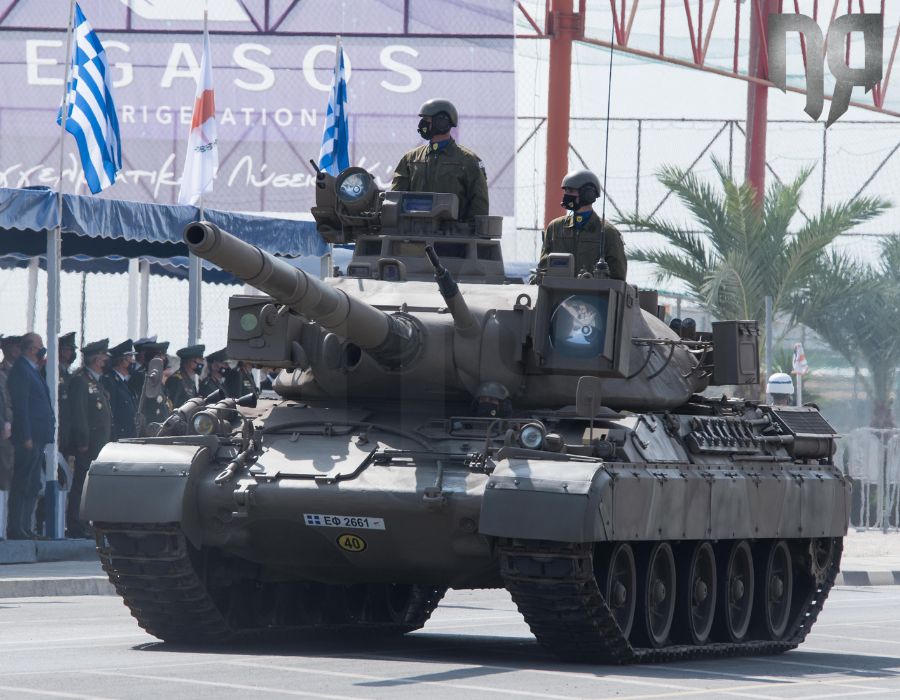
*Andreas Pogiatzi
Emerged in Europe during the Cold War, the family of AMX medium tanks made by Ateliers de construction d’Issy-les-Moulineaux (now known as ‘NEXTER’) was developed to compete with the (then) innovative Soviet T-55/54 and T-64 tanks.
What was initially a Franco-German joint venture to develop a European tank (Europanzer) eventually resulted in the development of the Leopard-1 in Germany and the AMX-30 in France.
The philosophy of the French manufacturers at the time was based on the view that no armor is strong enough to prevent the (then) innovative high-explosive anti-tank missiles (HEAT) and guided missiles.
The requirements to be met were that the tank should be as small as possible so as to constitute a small target, bear a 105mm gun, an air cooled petrol engine with a power/weight ratio of at least 30 hp/ton, torsion bar suspension with hydraulic shock absorbers and an operational range of at least 350 km.
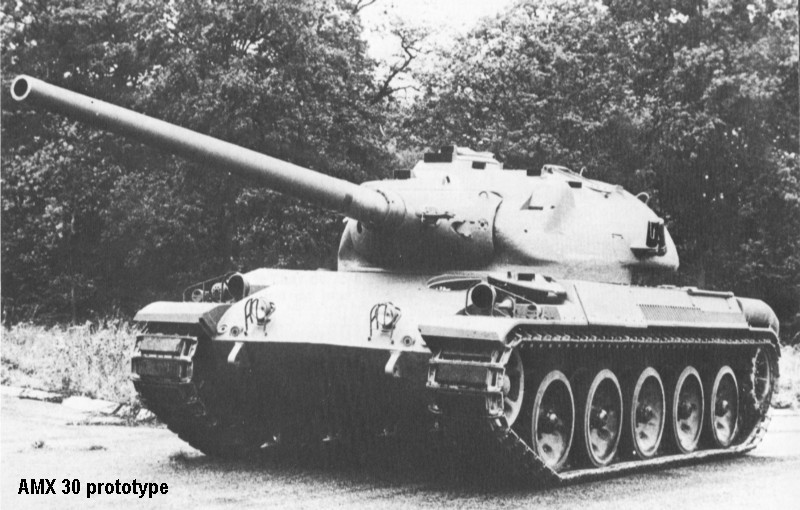 AMX-30 Prototype
AMX-30 Prototype
In general, the French built a medium tank with light armour, agility and adequate firepower. Subsequently, based on the standards of the AMX-30, the AMX-30B prototypes were built, with a modified turret and gun shield, which successfully passed the tests and entered service with the French Army.
The new vehicle weighed 36 tons and had a crew of four (driver, gunner, loader and commander). It was by far the lightest NATO tank and along with the Leopard-1, the AMX-30B was the spearhead of NATO armored forces, performing well in the 1990 Gulf War alongside the AMX 10 RC wheeled combat vehicles.
 French AMX-30B2 during the 1990-1991 Gulf War
French AMX-30B2 during the 1990-1991 Gulf War
The AMX-30B2
In the early 70s but also in 1979, the AMX-30B experienced significant upgrades, which resulted in the AMX-30B2.
In particular, the original Fire Control System (FCS) was upgraded to the COTAC (or AMXM581) digital model with a laser rangefinder mount and a CASTOR thermal camera, significantly increasing its capabilities.
The gun mantlet was also improved, while the turret was upgraded to the T.105MI format. As for firepower, it was increased with APFSDS ammunition.
Generally, the advantages of the upgraded vehicle include the fast (for the time) turret rotation, the large ammunition storage area that allows a high and constant Rate of Fire (RoF) with 9 rounds per minute and the 20 mm coaxial gun with maximum elevation of 40° to engage light armored vehicles and aerial threats. Other advantages include the improved suspension and the upgraded Hispano-Suiza HS-110-2 engine compared to the earlier AMX-30.
AMX-30B2 technical Characteristics
- Armor:
Front hull – 79 mm
Front turret – 80 mm
Hull side – 35 mm
Turret side – 40 mm
Back of hull – 30 mm
Back of turret – 30 mm
Turret roof – 20 mm
- Weight: 37 tons
- Height: 2.28 meters
- Length: 9.48 meters
- Width: 3.1 meters
- Maximum speed: 65 km/h
- Engine: Diesel Hispano-Suiza HS-110 power 720 hp
- Transmission system: Semi-automatic SESM ENC200
- Endurance: Max 600 km
- Armor: 105 mm CN F1 main gun
Coaxial gun 20 mm F2
NF1 7.62 mm machine gun
Quadruple smoke launcher
Limitations and weaknesses
Nevertheless, there are some limitations and weaknesses, since, in addition to its reduced (compared to newer tanks) armor, it cannot fire on the move due to a number of factors.
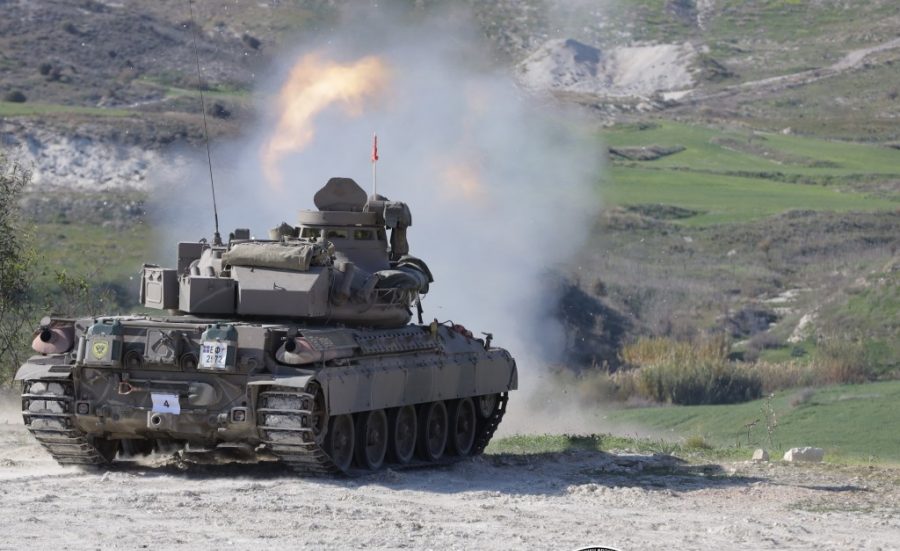 National Guard’s AMX-30B2©
National Guard’s AMX-30B2©
The reason the AMX-30B2s must be stationary to fire lies in the COTAC M581 fire control system. COTAC consists of the M544 coaxial telescope, the M550 laser rangefinder, the M579 electronic controller, the M421 angle computing module and a two-axis gyroscope.
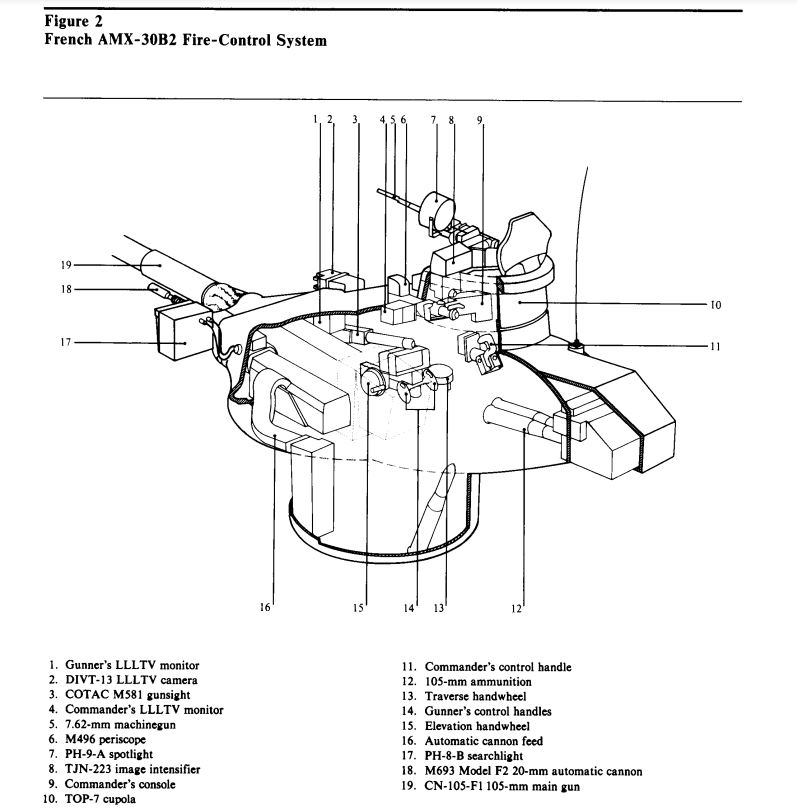
© CIA Director of Intelligence “Worldwide tank Fire-Control systems”
The angle computing module creates the electronic aiming point (reticle). The position of the target is automatically entered into the system either through telemetry with the laser rangefinder (which, using the 2-axis gyroscope, delivers the azimuth and firing angle data), or manually by the tank commander. Following on, the gunner should aim the cannon where the angle computing module indicates (on the reticle).
Although the COTAC provides an advanced ballistic solution for its time, this process is not achieved when the vehicle is moving. The cannon and scope are not electro-hydraulic stabilized by the gyroscope since this is only for the laser range finder (as to calculate the azimuth and firing angle for the target). So a fire on the move would most likely miss the target.
Todays’ modern combat platforms have been developed with the ability to fire on the move, thanks to advanced stabilization systems and safety technologies that reduce vibrations and maintain the safety of the crew.
The National Guard’s AMX-30B2
The National Guard has 52 AMX-30B2s which form a battalion, while the older AMX-30s have been withdrawn and now a number of them are used as targets on firing ranges.
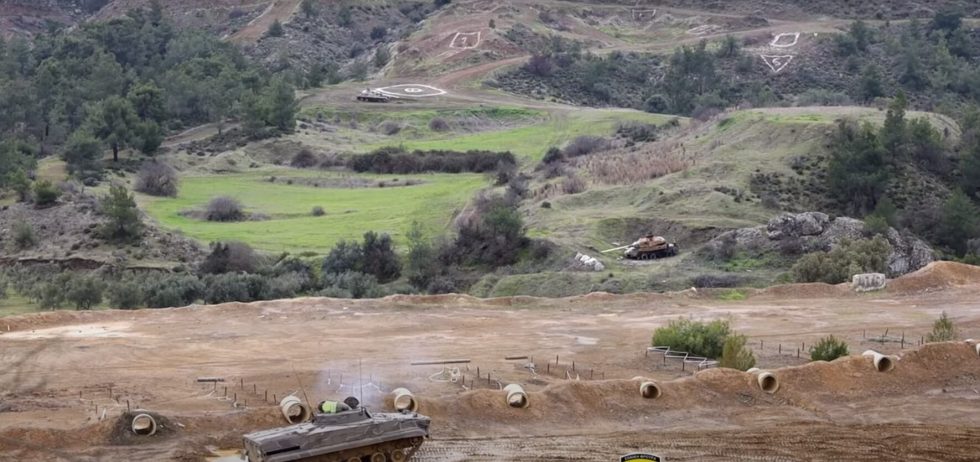 BMP-3 IFV of the National Guard during an exercise on Sia Shooting Range. Two decommissioned AMX-30Gs can be seen as targets in the background
BMP-3 IFV of the National Guard during an exercise on Sia Shooting Range. Two decommissioned AMX-30Gs can be seen as targets in the background
These AMX-30B2 tanks have served the National Guard for decades, thanks to the vigorous efforts of the personnel who keep them in operational condition.
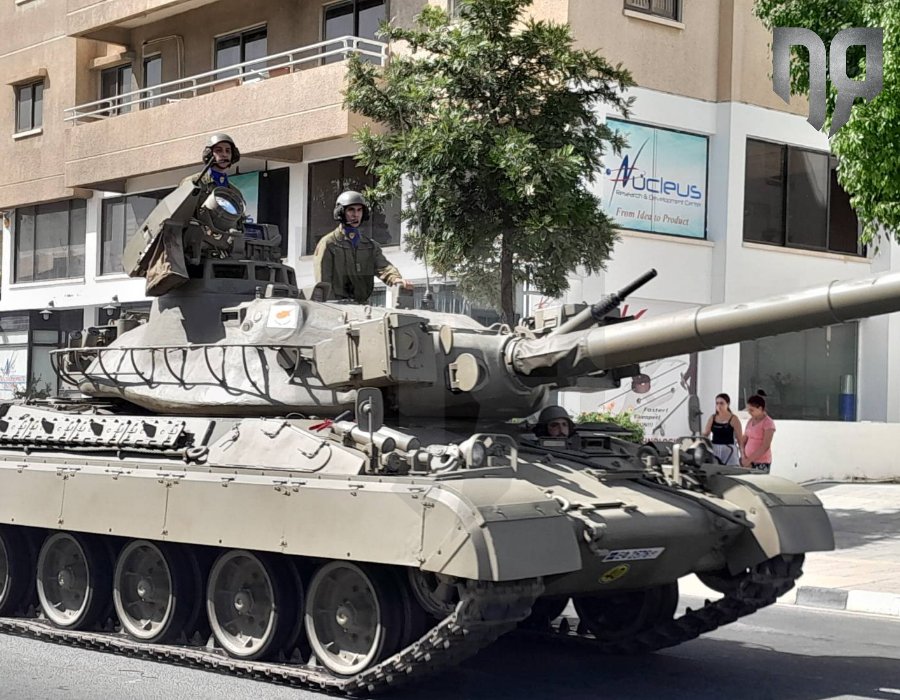 National Guard’s AMX-30B2 with new anti-IR paint during the parade on October 01, 2023
National Guard’s AMX-30B2 with new anti-IR paint during the parade on October 01, 2023
Upgrade
It’s already been 3 years since the Greek company EODH SA submitted a proposal for an upgrade package for the AMX-30B2 along with proposals for upgrading the EE-9 Cascavel as well as the “LEONIDAS” Armored Personnel Carriers.
Also read: Brazil is interested in modernizing the EE-9 Cascavel 6×6 fleet – What about the National Guard?
The offer of the Greek company concerned improvements in all electronic systems, the engine, the navigation system and the armor along with the creation (investment) of a factory in Cyprus, responsible for carrying out the upgrade works.
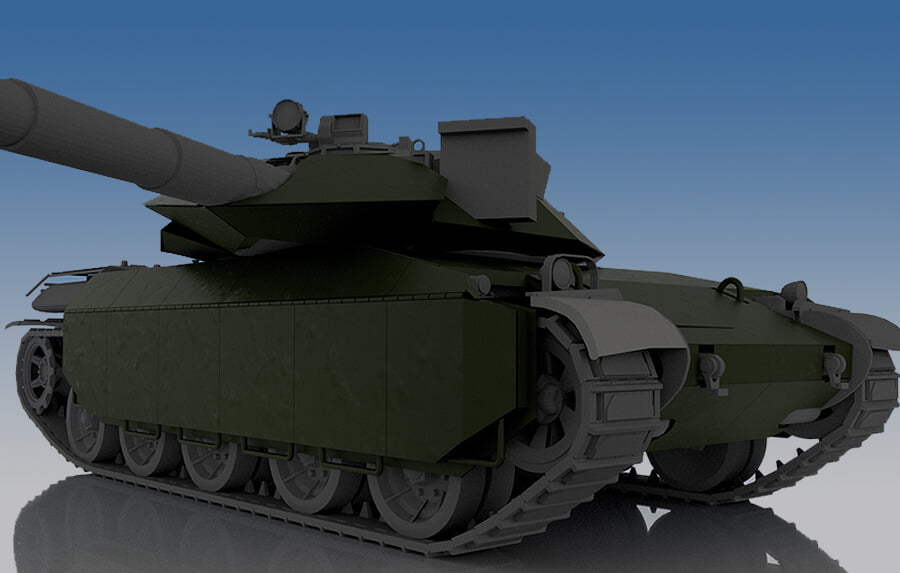 Rendering of Upgraded AMX-30B2 by EODH
Rendering of Upgraded AMX-30B2 by EODH
The proposal specifically involved the installation of a new 940 hp engine (instead of the existing 720 hp), the installation of a modern countermeasures system with a laser warning receiver (LWR) and multispectral smoke launchers, the replacement of the hydraulic turret rotation system with a new fire control system and gun stabilization system which replaces the COTAC and allows firing on the move.
The offer also includes the installation of auxiliary power unit (APU), air conditioning unit and automatic fire extinguishing system, while the cost (at the time) was by no means prohibitive (according to our information, the cost was about 1 million euros per tank with the upgrade done in Cyprus).
Replacement
The other option for the National Guard would be to replace the AMX-30B2 with a combat platform that meets all the specifications for the needs of the National Guard. Yet this requires two basic factors:
- The cost of acquiring a new Tank or a new Armored Fighting Vehicle,
- The delivery schedules given that for the delivery of new combat platforms the time varies from four to five years. A recent example is the order for 54 Leopard 2A7 tanks for Norway with a delivery schedule of 4+ years.
In any case, the armament needs are necessary and the geopolitical developments make them even more imperative. With the conflict in Ukraine entering its 2nd year, it is evident that there is a great need to maintain combat-ready armed forces using a mixture of new and older operational hardware as well as adopting new doctrines such as the use of Unmanned Aerial Vehicles.
Each solution will be a product of the respective authorities and the final decision that will be made by the political leadership should serve the needs of the National Guard in the best way possible in order for its mission to be fulfilled.
Below you can read another article regarding the National Guard’s T-80U tank upgrade scenarios published in February 2021, several months before the Russian invasion of Ukraine.
Also read: T-80U | 25 Years of service in the National Guard and its upgrade options – Infographics & VIDEO
READ MORE
A reluctant alliance? A different approach to French – Serbian defence relations
It has only been a few months since Croatia started receiving the first of the Rafale fighter jets it ordered from France.
The role of SERIOUS GAMES in the development of skills on Defense Standards
In an increasingly complex world, one vital factor for any successful organization is continuous capability building.
OSIRIS | Revolutionary Autonomous UAVs Capability from Delian Alliance Industries
OSIRIS, the Delian Alliance’s new navigation system, introduces a groundbreaking approach to the autonomy of unmanned aerial vehicles…
The obscure files of an anniversary or David vs Goliath: The Serbian Air Force against the 1999 NATO ‘Allied Force’ Operation
The 1999 NATO intervention in the Federal Republic of Yugoslavia (FRY) marked a significant turning point in post-Cold War military operations…
Ukraine | Long Neptune in Service with a Range of 1,000 km
Ukrainian President Volodymyr Zelensky recently announced that the Long Neptune cruise missile, with a range of 1,000 km, has…
EOKA | When Playmobils Tell the Story
Representations of historical events from Greek history, EOKA, Ancient Rome, the Wild West, as well as scenes from favorite films, came to life…
SEKPY | The Strategy of the Next Five Years is Necessary for the Hellenic Defence Industry
The proposals for the development of the Hellenic Defence Industry, in light of the upcoming announcements regarding the Hellenic Armed Forces’…
Hellenic Navy | National Anniversary Celebration of 25 March 1821 – Public Visit to Warships in Piraeus
From Friday, 21 March to Tuesday, 25 March 2025, as part of the celebration of the National Anniversary of 25 March 1821, the frigate SPETSAI…










